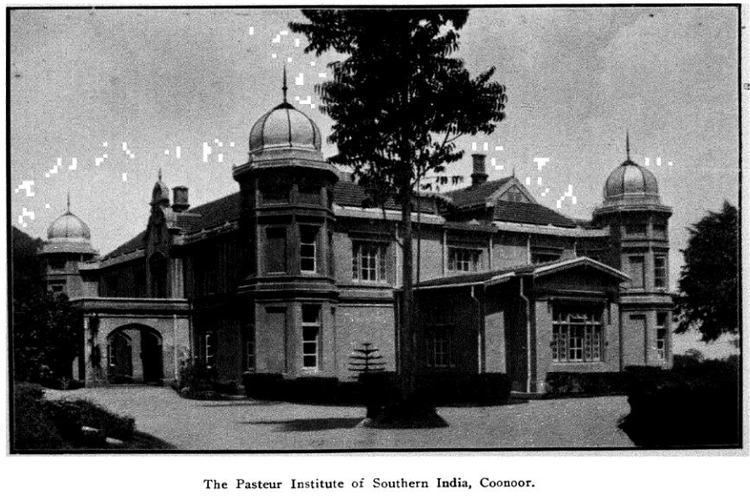Research type Public Address Jamai-Osmania | Director Thingnganing Longvah | |
 | ||
Motto "To achieve optimal nutrition of vulnerable segments of population such as women of reproductive age, children, adolescent girls and elderly by 2020" Field of research NutritionMicronutrients | ||
The National Institute of Nutrition (NIN) is an Indian Public health, Biotechnology and Translational research center located in Hyderabad, India. The institute is one of the oldest research centers in India, and the largest center, under the Indian Council of Medical Research, located in the vicinity of Osmania University. The institute has associated clinical and pediatric nutrition research wards at various hospitals such as the Niloufer Hospital for Women and Children, the Government Maternity Hospital, the Gandhi Medical College and the Osmania General Hospital in Hyderabad.
Contents
- History
- Research
- National Center for Laboratory Animal Sciences NCLAS
- NIN and FSSAI
- Education
- Achievements
- References
The National Centre for Laboratory Animal Science (to be integrated into the National Animal Resource Facility for Biomedical Research), and the Food & Drug Toxicology Research Centre, National Nutrition Monitoring Bureau are the other wings of NIN, for India's Ministry of Health and Family Welfare. The institute also derives funding from the Indian Department of Biotechnology. The institute majorly conducts research in obesity, diabetes, food chemistry, dietetics, drug toxicology, and micronutrient deficiency in collaboration with centers such as the Rockefeller University, University of Colorado School of Medicine, Washington University, and the Johns Hopkins Bloomberg School of Public Health in the U.S.. and the University of Wollongong in Australia.
History
The Institute was founded in 1918 by Sir Robert McCarrison. It was originally a single room laboratory at the Pasteur Institute, Coonoor, Tamil Nadu for the study of Beriberi, and was called the Beri-Beri Enquiry Unit. McCarrison was invalided to Britain from 1920–1922, and in 1923 the enquiry was axed on financial grounds. It was restored two years later as the Deficiency Disease Inquiry, which McCarrison headed from 1925-1929. The scope of the laboratory expanded to include all deficiency diseases, and around 1928-29 became the Nutrition Research Laboratories (NRL), with McCarrison as its first Director, until his retirement in 1935, when he was succeeded by Dr. W.R. Ackroyd. The facility moved to Hyderabad in 1958 and in 1969 was renamed the National Institute of Nutrition.
Research
The institute carries out research and patent development in clinical nutrition, outcomes research, pharmacology, pathology, toxicology, food chemistry, endocrinology, molecular biology, regenerative medicine, community nutrition, ophthalmology,
and sports nutrition. Agencies such as WHO and FAO recognized the institute as a Centre for excellence in food quality, safety and nutrition research.
The institute is equipped with state of the art facilities among Animal housing, In vivo-imaging, Automated electrophoresis, Flow cytometry, DNA Microarray, Liquid chromatography–mass spectrometry, Atomic absorption spectroscopy, Matrix-assisted laser desorption/ionization, Scanning electron microscope, Confocal laser scanning microscopy, Transmission electron microscopy, DNA sequencers, Cryogenic equipment, thermal cyclers etc.
National Center for Laboratory Animal Sciences (NCLAS)
Developed obese and diabetic mutant rat models: WNIN/GR-Ob, WNIN/Ob, WNIN/Ob-IGT, to serve as pre-clinical animal models in drug development for chronic diseases like diabesity. Established a state of the art non-human primate facility with provision for experiments based on monkeys. NCLAS also came into the limelight due to the WNIN/Ob obese rat strain which is the heaviest inbred rat model available. It has been reported to reach up to 1.47 kg in body weight and shows various signs of increased DNA damage and significantly decreased lifespan.
NIN and FSSAI
The Food Safety and Standards Authority of India (FSSAI), co-chaired by the Director of NIN is an agency of the Ministry of Health & Family Welfare, Government of India. The FSSAI is responsible for protecting and promoting public health through the regulation and supervision of food safety. The FSSAI has been established under the Food Safety and Standards Act, 2006 which is a consolidating statute related to food safety and regulation in India.
Education
NIN offers advanced education courses and MS-MD-PhD program(s) for nutrition, biochemistry, dietetics and laboratory animal sciences. The Centre is recognized by Dr. N.T.R. University of Health Sciences for pursuing post graduation in Applied Nutrition. Recently NIN has started awarding Research Fellowships to the toppers in the M.Sc. course to pursue Ph.D. in the institution. The institute is well recognized by Osmania University, University of Hyderabad, Jawaharlal Nehru Technological University, for pursuing Ph.D. in various streams of Life Sciences especially Biochemistry and Nutrition. The institute has trained over 1600 health professionals from more than 35 countries. More than 150 candidates have successfully obtained Ph.D. and MD degrees from NIN.
